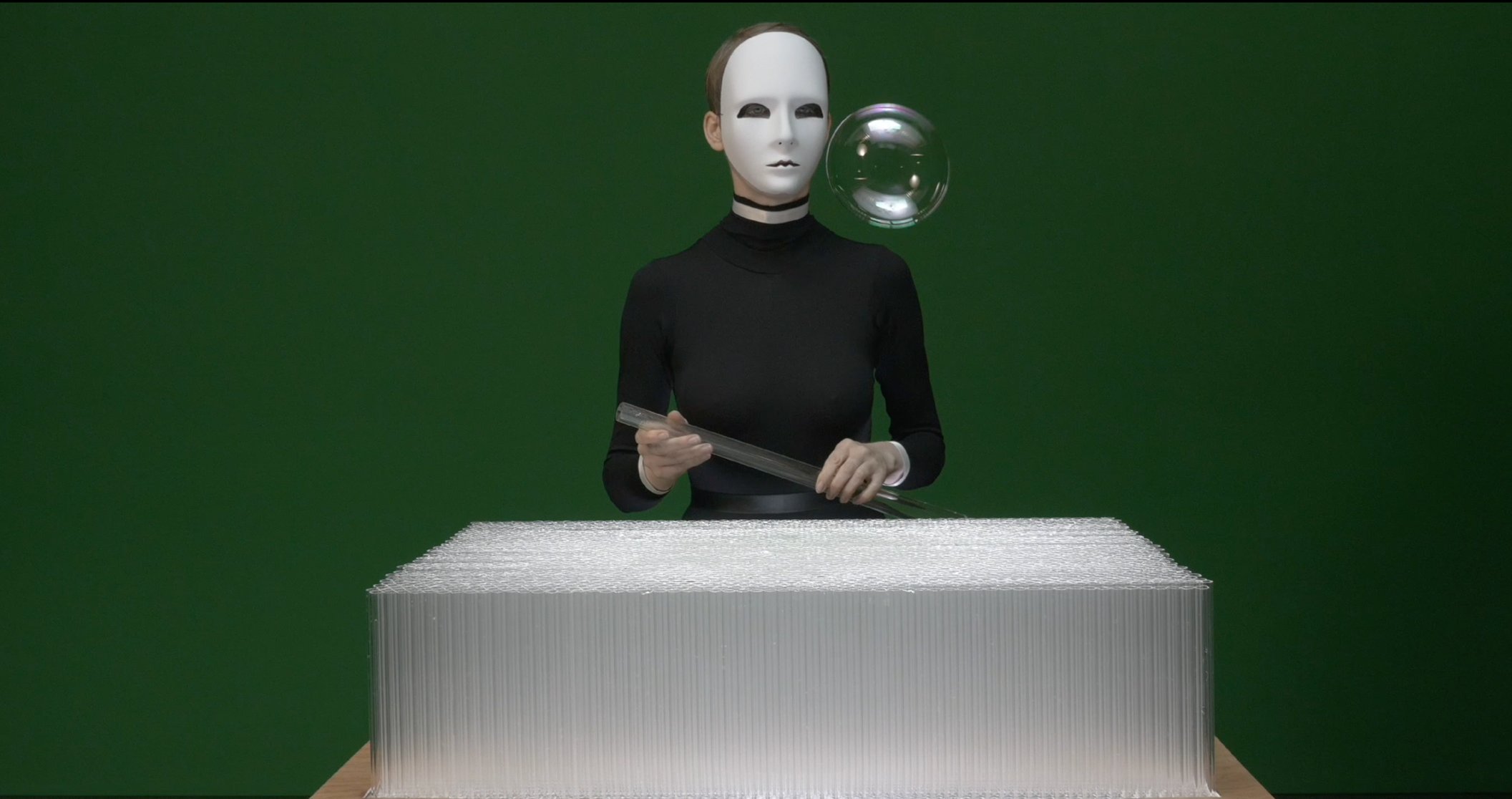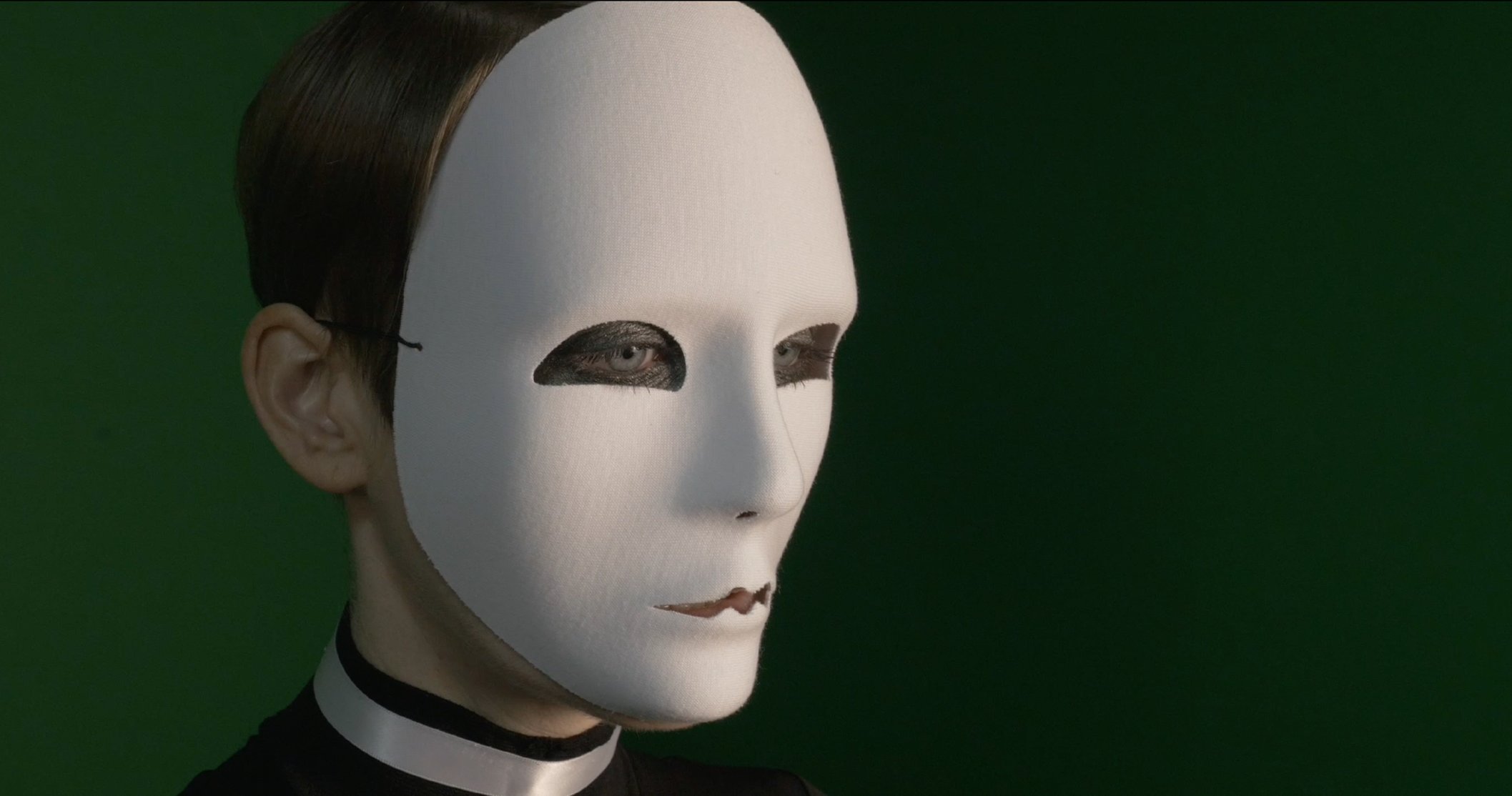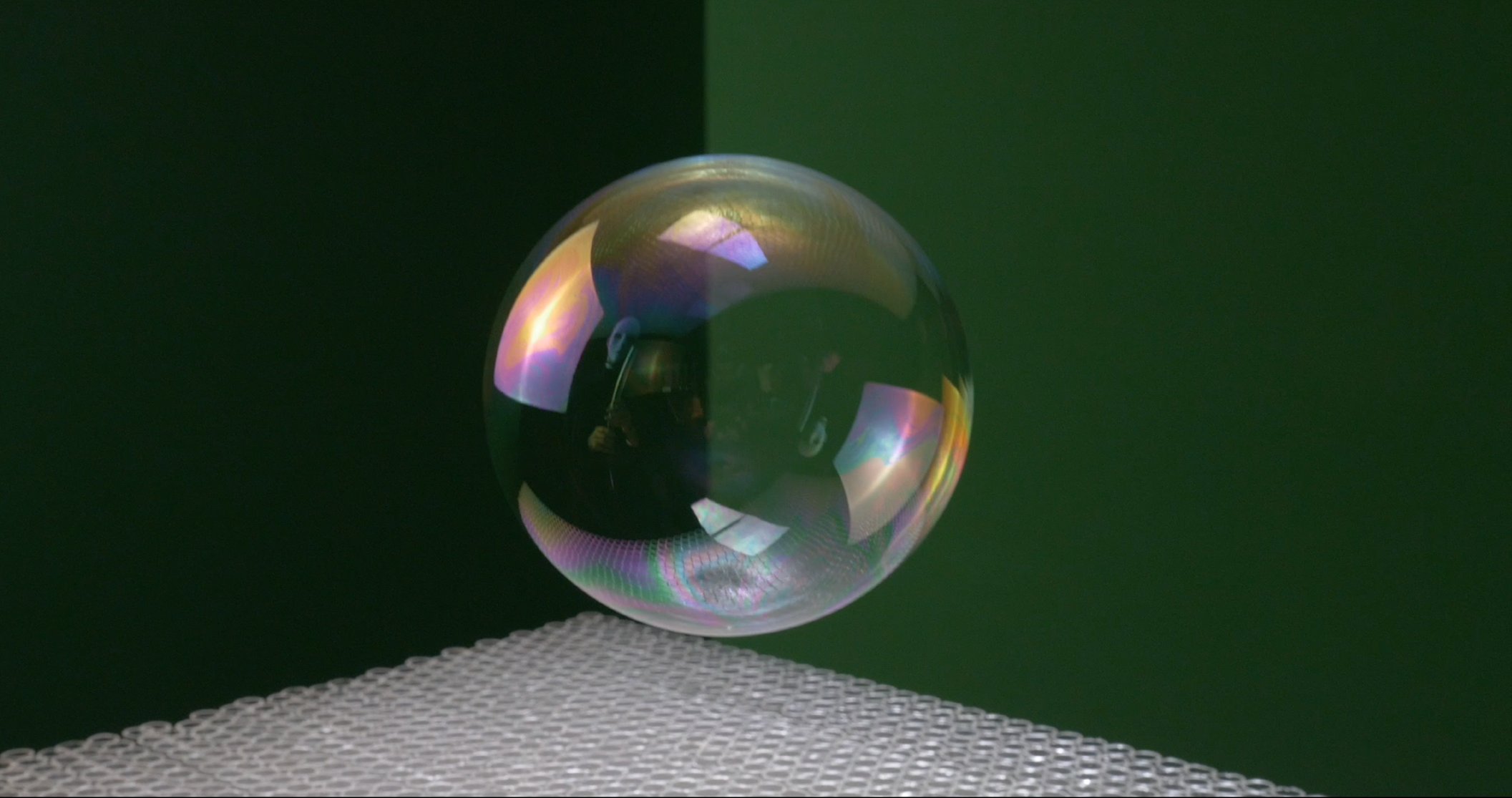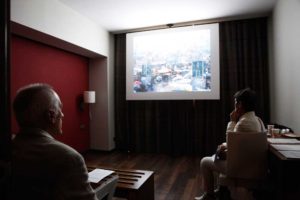
— Log in to watch the artist video if you have been given an access
- Artist
- Olivier Dollinger
- Title
- The climate control and the summer of love
- Year
- 2016
- Duration
- 11 min
- Format & Technical
Single channel, loop, Full HD, colour, sound
5 + 2 AP
- Music
- Produced by
Chroma green is one of the main resources used in video to create the illusion that it is possible to see anything one wishes to display. The chroma background will later be replaced in the post-production processes. The sensible world, then, is no longer the source of images; it has been replaced by hypertechnologisation, which can recreate what we know by borrowing from a video archive, as well as from our imagination.
In The Climate Control and the Summer of Love, Olivier Dollinger stages an almost surgically calculated cinematic atmosphere. His set is extremely neat, but with an electric green replacing the usual white. Here, the performer dressed in black with a white mask covering her face enters into dialogue with this green screen aesthetic. Both elements placed in front of the camera, scenery and actor are alienated. The potential of their beings is infinite, and in this non-recognition they are diluted, because they would only be defined during a hypothetical post-production.
The suggested action reinforces this “liquid” quality too: the actress shakes a bottle of soap and water and blows on the mix into a glass tube to make a bubble. She then hypnotically observes the transparent sphere while it floats. At times, the bubble takes on the appearance of a camera lens that reflects whomever it observes. But the soapy bubble is fragile and, at the slightest touch, it vanishes. The act is repeated. This time, what disappears is not the bubble, but the human. Now only the audience observes the floating sphere until finally it transforms into a spectre and slips back down the transparent tubes from which it rose. We are left observing the only thing we thought would be replaced: the green set.
The surgery should be the most contained space in existence along with the procedures carried out within it. Yet on this occasion, in the production room, the conditions appear to cause the failure of the experiment. Objects and characters are diluted. One might think that the climate conditions—of the weather—are out of control, and that they cannot endure the lapse—of time—, reaching the final disappointment (in French, the word temps refers to the weather as well as to time).
We stand before a paroxysm of the moving image’s illusionist ambition. It works like a metaphor for the metamorphosis that electronic images allowed for: images are nowadays multiplied and distributed almost infinitely, thanks to virtual and digital technology. Herein resides the paradox presented by Dollinger’s film: in order to create audiovisual images, he does without everything except for the green screen, that maximum receptor of virtuality. Let it all disappear, except for the after effects.
Melina Ruiz Natali
Stills





